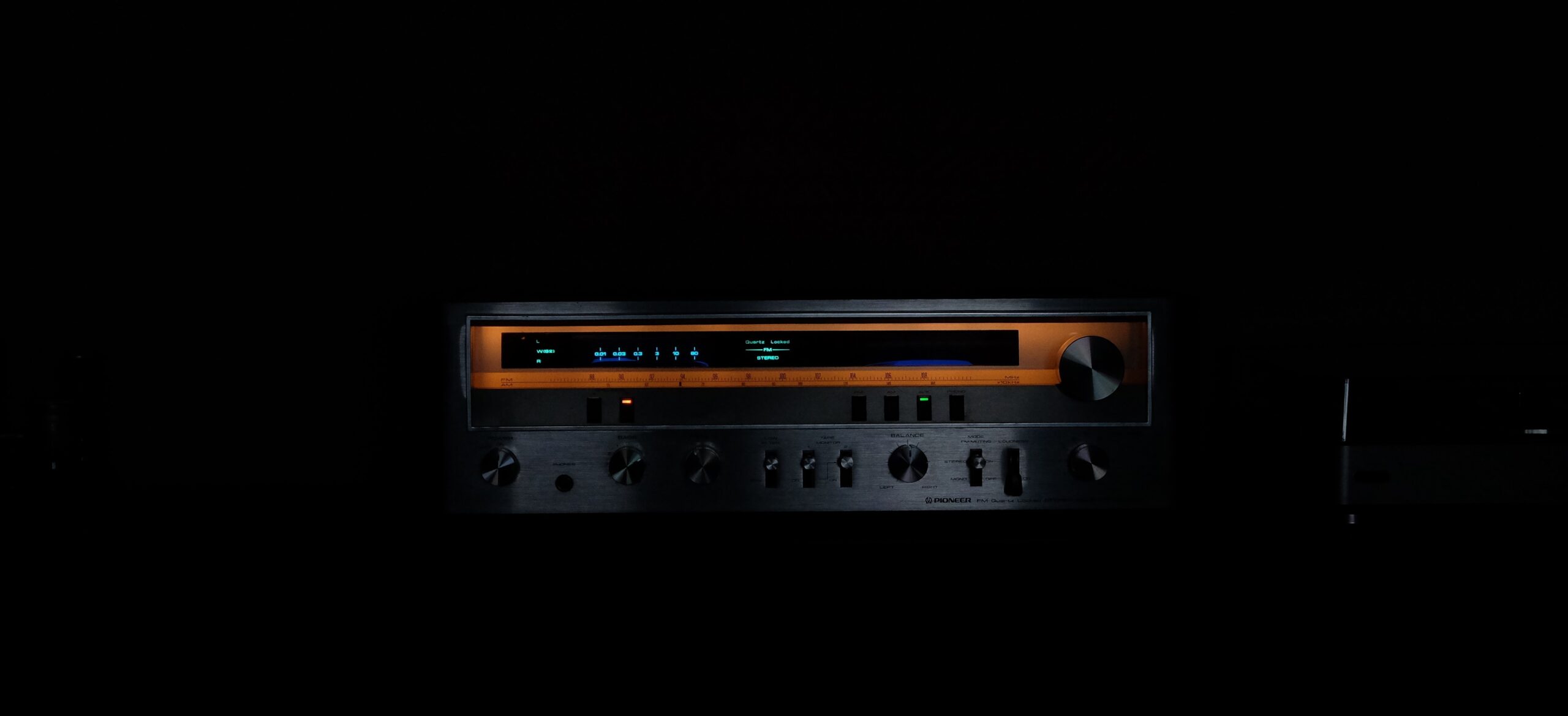If you want to add subwoofers into your current home theatre rig, you get all the details you need. Like most audiophiles would inform you, passive subwoofers lack amplifiers and must be wired to an active amplifier in order to function properly. In-home theatre speakers, mostly tiny for cosmetic purposes, cannot even produce bass below 150Hz, which involves the lower pitches of a piano or male voice. A subwoofer is needed to fill in the gaps left by these smaller, bass-limited speakers. The concept is straightforward: remove the primary factor from the primary speaker boxes and relocate it to a particular position hidden from view in the shape of a subwoofer.
What Precisely Is A 2-Channel Stereo Receiver?
To get the greatest audio experience while watching a video, you’ll need a surround sound device. A two-channel setup is the most basic stereo system, excluding surround sound but attempting to have a greater atmosphere than a single speaker. The music captured in stereo has two channels, allowing you to hear sound in different dimensions. A 2-channel machine attempts to mimic how each sound was recorded by placing the speakers – on either side of the audience – to whether the sound is played back.
Step-by-Step Instructions for Connecting a Subwoofer to a 2 Channel Receiver
Subwoofers must be wired to an external amplifier since they lack internal amplifiers. Following are the steps by which you can connect your subwoofer easily with a 2 Channel Receiver or other AV receiver..
1. Make Certain That Everything Is Turned Off
Before linking the system parts, ensure that the subwoofer and also amplifier is switched off and properly turned off.
2. Attach the Subwoofer with an External Amplifier Properly
You must find out where your subwoofer should be located before you start the setup process. Luckily, there is not any lateral pressure on the subwoofer. However, good synchronization with the subwoofer is essential to get your device’s full audio quality. Starting the process, connect the subwoofer to your external amplifier by using RCA cables. And then, you would need to use 2 types of cables if you require a stereo system. Many RCA cables are available in pairs, like Monoprice 1.5ft Premium 2 RCA Plug. The configuration phase actually involves adding the output of your amplifier to your subwoofer only. “subwoofer output” is indeed the jack for connection on your amplifier. If there is not a sub-out for your recipient, remember that there are many other ways to connect your subwoofer to an amplifier that does not have a sub-out.
3. Examine the Subwoofer
You should search the sub if you have any issues. This phase requires the subwoofer to be known. A single voice spiral is provided for the subwoofer, ensuring a negative and optimistic terminal. This could also be a double voice coil subwoofer, and that has two negatives as well as positive terminals with different coils within and two individual drivers inside. Dual vocal bobbins are more flexible than single voice bobbins since they have greater cabling capabilities. If you are unsure, you could check the owner’s manual of your subwoofer.
4. Hook Up the Amplifier and Stereo Receiver
As modern receivers are mostly tuners with integrated amplifiers, the functions of a receptor as well as an external amplifier may be overlapped. An audio-visual receiver, on the other hand, serves as a hub for audio transmission to make the output from your TV the same as that of your home audio system. Link cables from either the receiver to the same amplifier to match the signal from your entire system in order to connect your amplifier through your stereo receiver. In this step, you must link a cable from the pre-out port of the receiver to the input jack of the external amplifier.
5. Connect the Speakers to the Receiver or Amplifier
If you want audio-quality sound to hear, the two-way receiver must be connected to your microphones. Fortunately, this is an easy procedure since the recipient has either front or main outlet ports. Here are the wires of the speaker linked. Ensure the right and left speakers are coupled correctly before linking the speakers. In order to avoid issues with polarity, ensure that the positive terminal binds to the positive terminal of your subwoofer. Here is how to fit a two-channel amplifier for up to four speakers. The bond can be completed by connecting your speakers. Then you can fine-tune the performance with controls on your receiver. You can then turn on your power source and start to experience the audio quality of your receiver.
